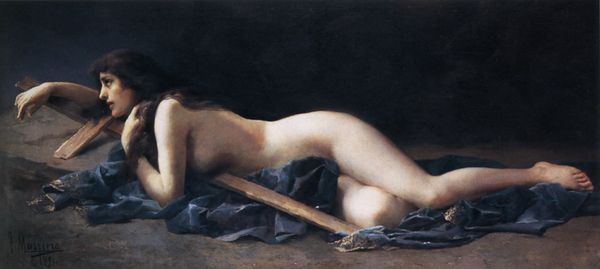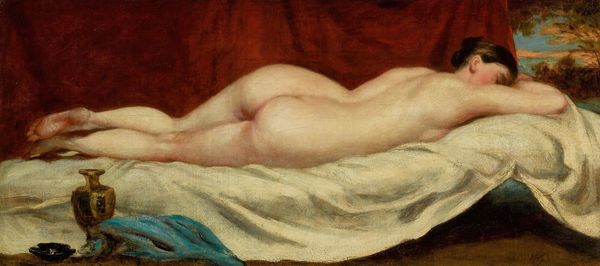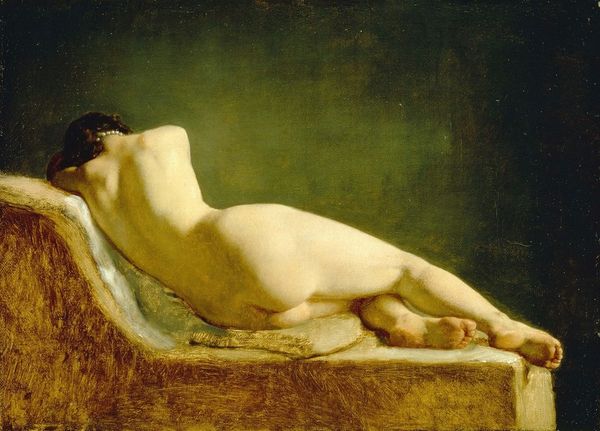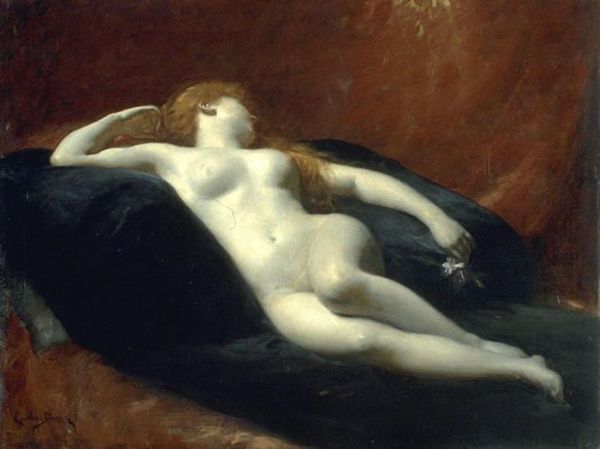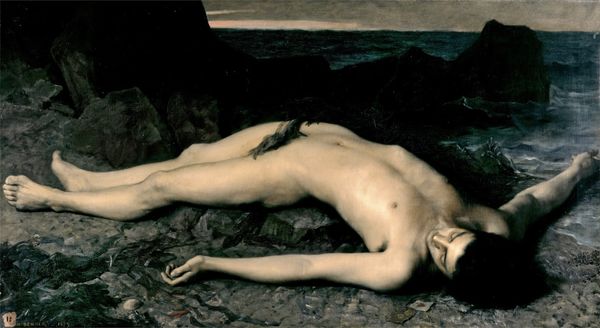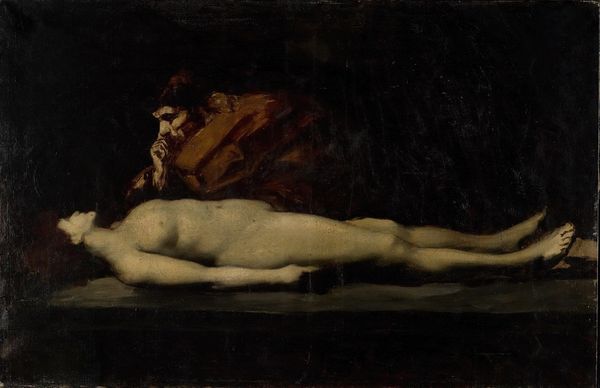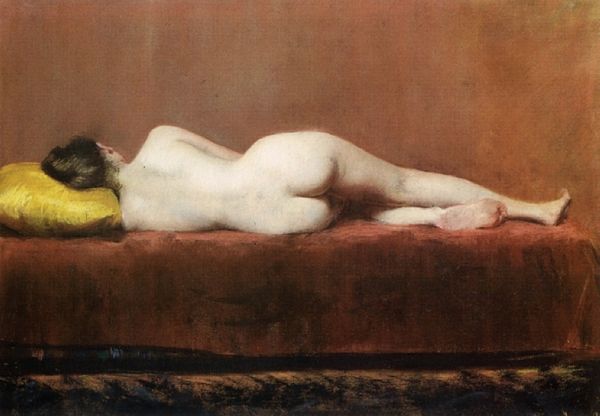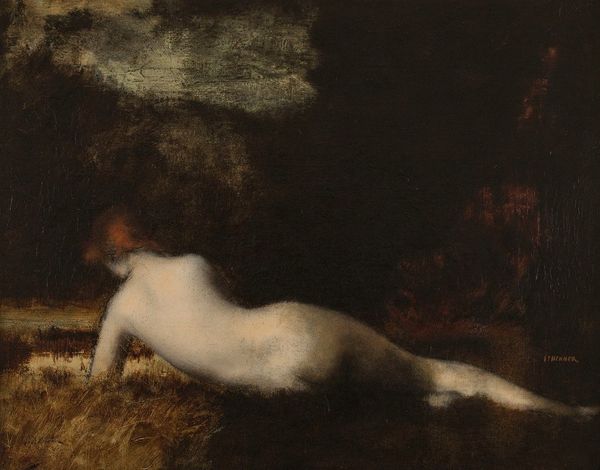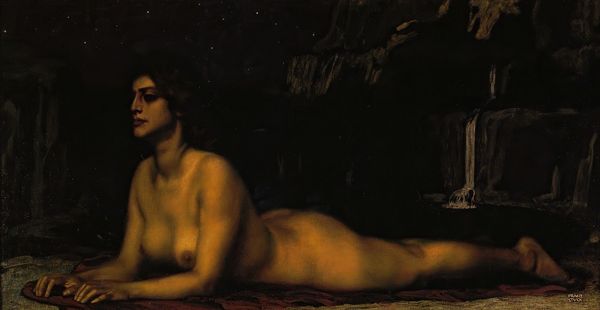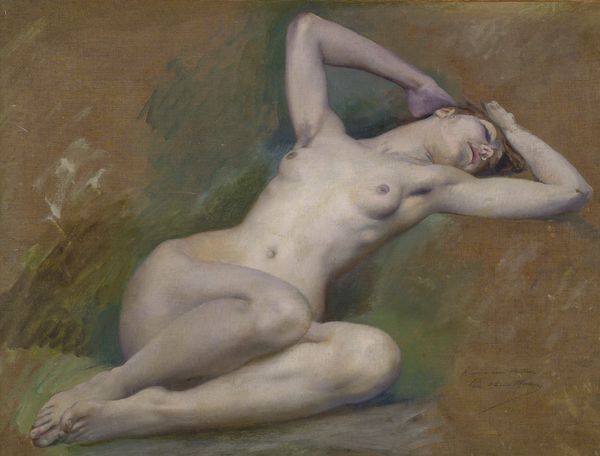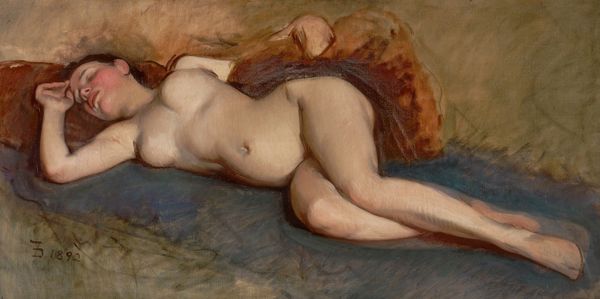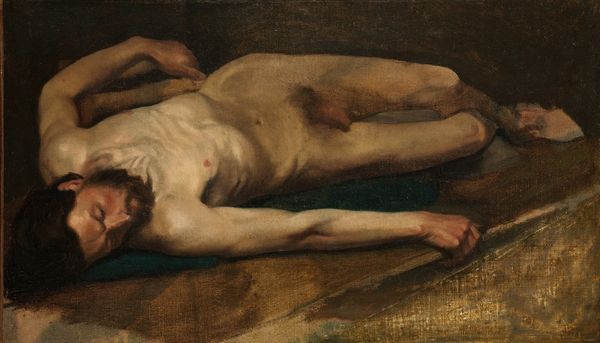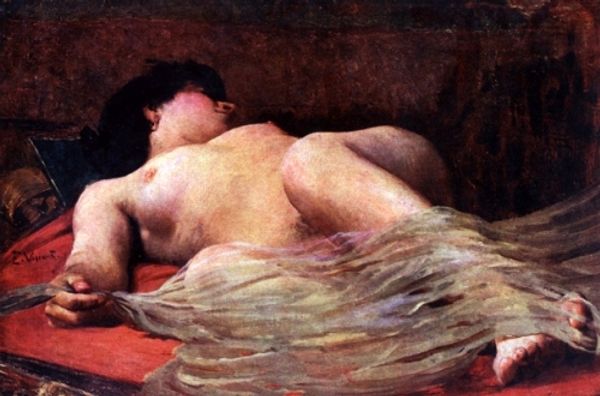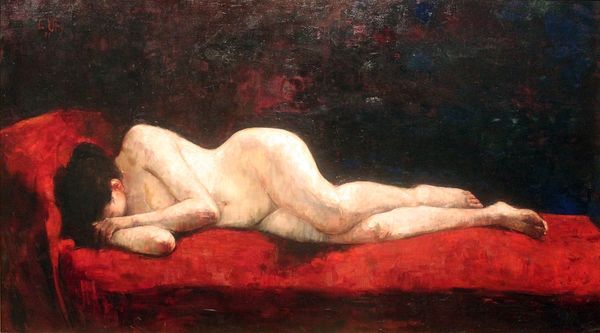
painting, oil-paint
#
figurative
#
painting
#
oil-paint
#
figuration
#
romanticism
#
academic-art
#
nude
Copyright: Public Domain: Artvee
Curator: Let’s discuss “Dormeuse,” an oil painting by Jean-Jacques Henner. The artwork presents a reclining nude figure bathed in a soft, hazy light, characteristic of Romanticism. Editor: It strikes me immediately as quite somber. The palette is constrained—almost monochromatic—but that accentuates the languid pose and the dreamlike atmosphere. It is not as overtly sensual as many nudes of that period. Curator: Precisely. Henner’s choices in terms of the material aspects of paint and canvas contribute significantly to this effect. He clearly built up the oil paint in layers, particularly in the background and around the figure. We might wonder about the conditions of its creation: the available pigments, the constraints of the art market at the time, the training within the academic system. All of these contextualize Henner's artistic decisions. Editor: You’re right, there's a certain density achieved with the pigment itself; the darks absorb the light almost completely. Compositionally, her red hair creates a dramatic cascade contrasting with her pale skin, but look at how he blurred the facial features to create distance between viewer and subject. The way he applied the oil paints contributes directly to that ethereal feeling. Curator: Also note the choice of subject, a reclining nude—a trope often employed throughout art history. Yet, Henner avoids idealization in rendering this particular form, a departure perhaps speaking to shifts in societal views and art production during his era. Editor: But can’t we also interpret the hazy representation of the figure’s features through the lens of philosophy and form? Is this not Henner’s own take on realism and idealism—an almost impressionistic blur that transcends mere materiality? I see it more in terms of its semiotic value. Curator: Perhaps. I’d like to also consider labor—the model’s time, the conditions she was working under, Henner's labor and whether it would yield financial success in the French art world. Editor: Fair points. Curator: So when we look at this piece, we cannot just appreciate it in terms of style and subject matter; we should analyze the complex negotiations that have transpired, influencing Henner’s painting. Editor: Right—to view “Dormeuse” through different lenses allows us to more fully understand Henner’s choices regarding color, line, composition, form, and even materials used, but also the environment in which it came into existence.
Comments
No comments
Be the first to comment and join the conversation on the ultimate creative platform.
